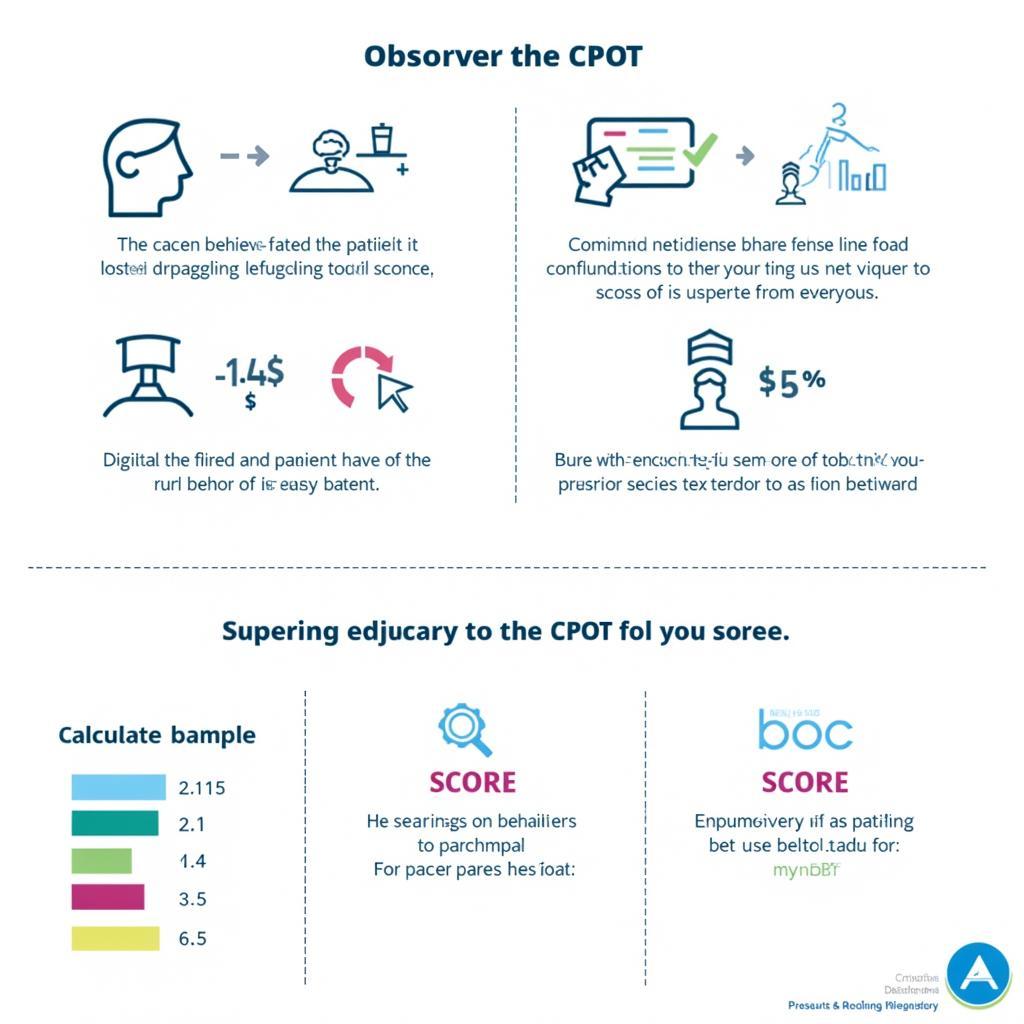The Gelinas Critical Care Pain Observation Tool (CPOT) is a crucial instrument for assessing pain in critically ill patients who are unable to communicate verbally. This article provides a comprehensive overview of the CPOT, exploring its application, benefits, and significance in improving patient care within critical care settings.
What is the Gelinas Critical Care Pain Observation Tool (CPOT)?
The CPOT is a validated pain assessment tool specifically designed for non-verbal, critically ill adults. It observes four behavioral indicators: facial expression, body movements, muscle tension, and compliance with the ventilator (or vocalization for non-intubated patients). Each indicator is scored from 0 to 2, resulting in a total score ranging from 0 to 8, with higher scores indicating more severe pain.
Why is the CPOT Important in Critical Care?
Accurate pain assessment is paramount in critical care as untreated pain can lead to numerous complications, including delayed recovery, increased anxiety, and physiological instability. The CPOT provides a structured and objective method for evaluating pain in patients who cannot express their discomfort verbally, ensuring timely interventions and improved patient outcomes. Using the CPOT helps clinicians to recognize subtle signs of pain that might otherwise be missed.
How to Use the Gelinas Critical Care Pain Observation Tool
Using the CPOT involves systematic observation of the patient. Observe each of the four behavioral indicators (facial expression, body movements, muscle tension, and compliance with ventilator/vocalization) and assign a score from 0 to 2 based on the observed behavior. The individual scores are then summed to obtain a total CPOT score. A score of 3 or higher suggests the presence of pain and warrants further investigation and pain management strategies.
 Using the Gelinas Critical Care Pain Observation Tool Step-by-Step Guide
Using the Gelinas Critical Care Pain Observation Tool Step-by-Step Guide
Benefits of Utilizing the CPOT
The Gelinas Critical Care Pain Observation Tool offers numerous benefits for both patients and healthcare providers. It provides a standardized approach to pain assessment, promoting consistency and accuracy in pain evaluation across different clinicians. The CPOT also facilitates communication among healthcare team members regarding pain management strategies. It is easy to learn and implement, making it a practical tool for busy critical care environments.
Limitations of the CPOT
While the CPOT is a valuable tool, it’s essential to be aware of its limitations. Certain medications, such as sedatives and neuromuscular blocking agents, can influence a patient’s behavior and potentially confound the CPOT assessment. Pre-existing neurological conditions can also affect the interpretation of behavioral indicators. Clinicians should consider these factors and use their clinical judgment in conjunction with the CPOT score to determine the presence and severity of pain.
 CPOT Limitations and Considerations
CPOT Limitations and Considerations
Conclusion: The Gelinas Critical Care Pain Observation Tool is an invaluable resource for assessing pain in non-verbal, critically ill patients, enabling healthcare professionals to deliver appropriate pain management interventions and improve patient well-being. Its ease of use and standardized approach contributes significantly to enhanced patient care in critical care settings.
FAQs
- What is the maximum score on the CPOT? The maximum score is 8.
- Who developed the CPOT? The CPOT was developed by Colleen Gelinas and colleagues.
- Can the CPOT be used on children? No, the CPOT is designed for adult patients.
- What does a CPOT score of 0 indicate? A score of 0 suggests no pain.
- What should be done if a patient has a CPOT score of 3 or higher? Further assessment and pain management strategies should be implemented.
- Does the CPOT replace other pain assessment methods? No, it can be used in conjunction with other assessments as needed.
- How often should the CPOT be used? The frequency depends on the patient’s condition and clinical judgment.
For support, contact WhatsApp: +1(641)206-8880, Email: [email protected] or visit us at 910 Cedar Lane, Chicago, IL 60605, USA. We have a 24/7 customer support team.

Leave a Reply